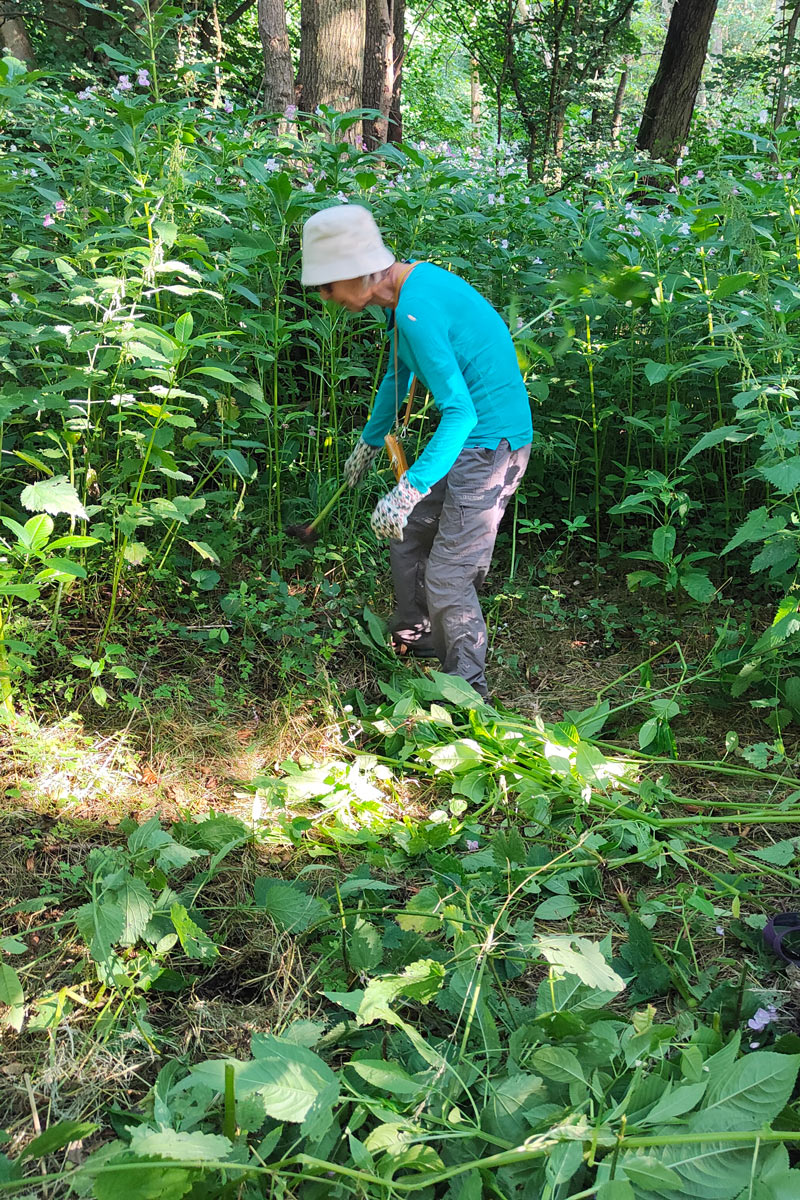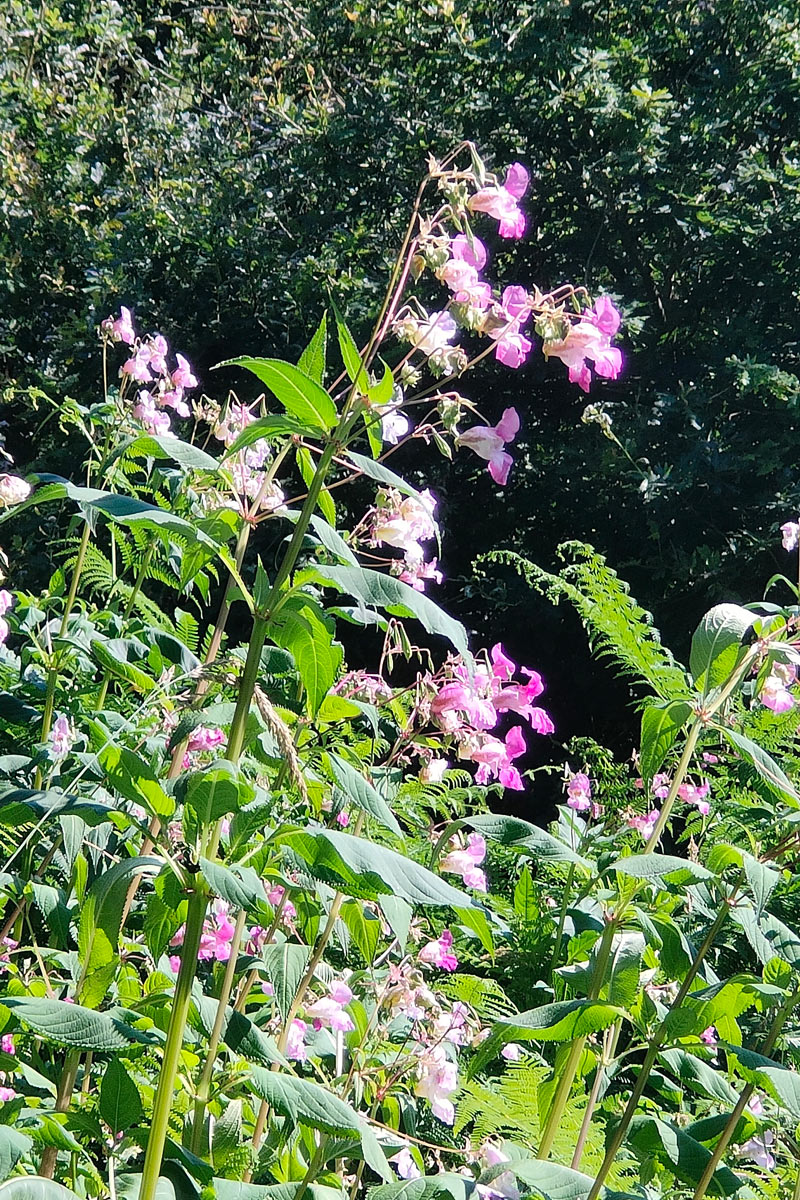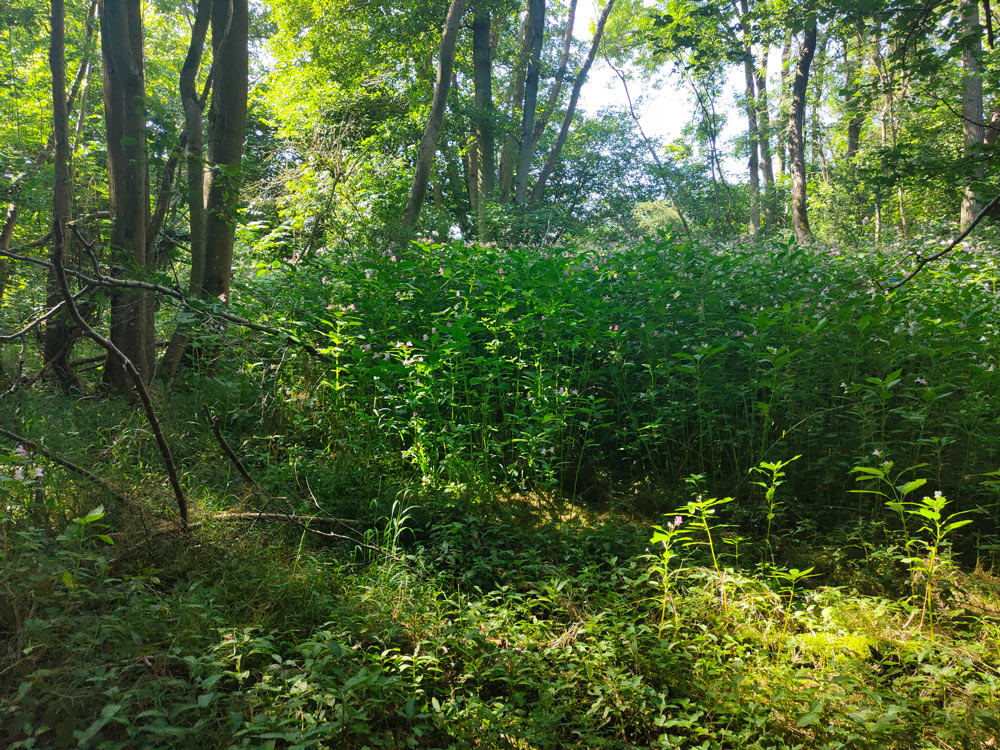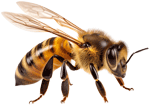2nd Aug 2024
Attacking Himalayan Balsam in Besselsleigh Woods
Himalayan Balsam was first introduced into the UK from the Himalayan region of India by John Forbes Royle in 1839. It was intended as plant that established itself rapidly, so that poorer people could have a splendid display of flowers rivalling the orchids of the rich. It escaped the bounds of cultivation within 10 years, however, and became established along riverbanks of England.
It's flowers look pretty, but it is classed as an invasive species. Its seeds spread widely as the seed heads "ping" - split forcibly and fling the seeds large distances. It is also a good source of nectar, which means pollinators visit it and spread the pollen widely as well. The problem with it is that it forms vast stands of plants up to 2m tall that out-compete native plants. It dies back in autumn and winter sometimes leaving river banks bare of vegetation and open to erosion.




Himalayan Balsam has been a problem in Besselsleigh Woods for a while. Even though most of the woods are not next to Osse Brook, the area is obviously
damp enough to support the plant and close enough to the water for the seeds to get in.
To try to contain it, or even reduce its spread Richard Snow organised a couple of sessions of "Balsam Bashing" - cutting down or pulling up as many of
the plants as possible before they set seed, so that the seeds can't develop next year. So, on Tues 30th July and Thurs 1st Aug a group of 9 volunteers
gathered to take action - well, that should be 8 volunteers and one woman pressganged into service while walking her dog. Scythes, secatuers and hand-pulling
were used to remove as many plants as possible, braving brambles, nettles and obstacles of fallen logs in the process. It was really hard work, but an
impressive area was cleared.
There is one opinion that clearing plants in the spring is more effective, as by now seeds may already have been produced, and these can be spread on the boots of those who think they are containing the plants, and also that a source of nectar for bees is being removed. Perhaps this means that another session should take place next spring, so that together with the action taken this week, the balsam may be effectively managed.

Himalayan Balsam pic By H. Zell - Own work, CC BY-SA 3.0, https://commons.wikimedia.org/w/index.php?curid=10476769


